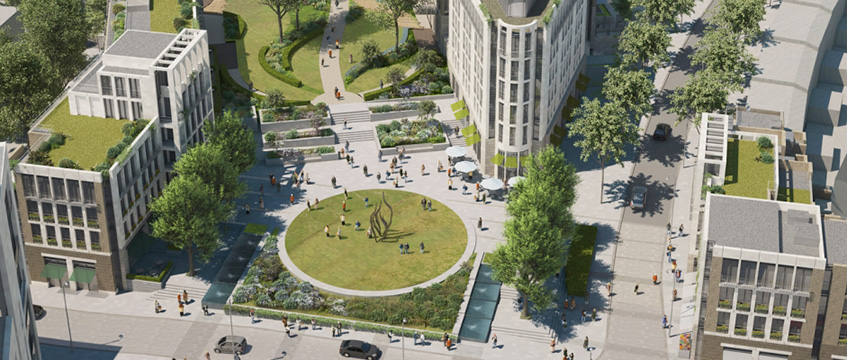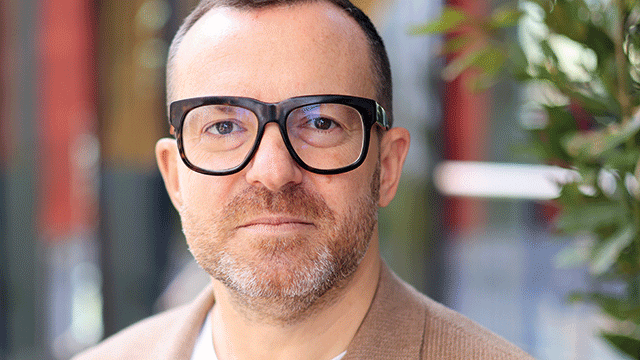Can Canary Wharf Group rescue Earls Court?
Canary Wharf Group has emerged as the latest potential suitor for Capital and Counties’ Earls Court, but can it turn around a 77-acre site that has been mired by controversy and a lacklustre London property market?
The scheme has lost more than half its value in just over four years, with Capco’s share of the site, which is mostly held in a vehicle with TfL, worth £412m, according to a valuation by JLL, down from a 2015 peak of £803m.
However, it remains one of the largest development opportunities in London, having already got a £12bn masterplan in place for 3.4m sq ft of new homes (7,500 units) and commercial space across two London boroughs: Hammersmith & Fulham and Kensington & Chelsea.
Canary Wharf Group has emerged as the latest potential suitor for Capital and Counties’ Earls Court, but can it turn around a 77-acre site that has been mired by controversy and a lacklustre London property market?
The scheme has lost more than half its value in just over four years, with Capco’s share of the site, which is mostly held in a vehicle with TfL, worth £412m, according to a valuation by JLL, down from a 2015 peak of £803m.
However, it remains one of the largest development opportunities in London, having already got a £12bn masterplan in place for 3.4m sq ft of new homes (7,500 units) and commercial space across two London boroughs: Hammersmith & Fulham and Kensington & Chelsea.
As well as CWG, the scheme has also attracted interest from CK Asset Holdings, run by Hong Kong tycoon Li Ka-shing.
‘Too much money’
It is understood CK offered £400m for interests in the scheme, which was roughly £100m less than Capco was looking for. Others also found the asking price too steep. One property executive commented: “It is a nice site and we would look at it but it’s too much money.”
For CWG, which is owned by Brookfield Asset Management and the Qatar Investment Authority, the scheme would arguably slot well into its increasingly mixed-use portfolio.
“They are very credible buyers and with the valuation of Earls Court having fallen 50% since its peak, it makes sense that a group like that would look into it,” said Hemant Kotak, managing director at Green Street Advisors. “Yes, it’s a move west but I think there are also a lot of parallels with CWG’s existing estate.”
A senior developer added: “CWG now has a large in-house team that can deliver large scale estates and infrastructure. Earls Court is a good opportunity in terms of complexity and scale and CWG’s model needs to evolve away from pure offices.”
Henry Moss, real estate partner at law firm Ashurst, agreed CWG is well positioned for the task. “Earls Court is a challenging scheme, but the thousands of new homes it will deliver are vitally important for London. Canary Wharf have a great track record in delivering major regeneration schemes with complex rail interfaces and it is encouraging that they are interested in this project.”
The group is building Wood Wharf, a new district in Canary Wharf that will offer 3,300 homes, as well as offices and shops. It is also responsible for Southbank Place which will provide 48,000 sq ft of shops and 800,000 sq ft of residential, alongside offices.
CWG also has the advantage of an existing relationship with TfL, having worked on the Canary Wharf Crossrail station.
A second real estate lawyer commented: “Anyone stepping into this joint venture needs to be aware that TFL will, I’m sure, have provisions around suitable levels of technical and financial expertise. CWG has a longstanding relationship with TfL.
“In contrast, some of the other names in the press, high net worths from wherever, may find it just that bit harder to demonstrate a track record.”
A fresh perspective?
While CWG may offer a credible image, the real question is what it will do with the site. Critical to any progress will be how it approaches key stakeholders.
Capco has already tried to push forward a revised scheme, with a view to adding more housing density. But Labour-controlled Hammersmith & Fulham council wants to take back two council estates and is pushing for more affordable housing on the site.
As a result, progress has been slow, compounded by London’s battered prime housing market. Efforts to add extra density to the scheme have also proved troublesome.
Kotak said: “There is flexibility in the masterplan and Capco looked to adding 30-45% extra density. It could have been a win-win situation but nothing came of it given it’s all very politically charged. For any prospective buyer, I would think future planning amendments are subject negotiation and that there is room for improvement. If not, there is always the fall-back option of the existing permission.”
The political wrangling and plummeting house prices have slowed housebuilding on the site. Activity so far has focused on Lillie Square, where 420 homes will be built by the end of the year. The scheme is over 90% sold for phases one and two. The scheme, which is being delivered in partnership with the Kwok family, is expected to deliver around 800 homes for sale in total.
However, Capco has also made progress on assembling the land, securing the consent and preparing the rest of the site for development. Work is ongoing on preparing the former Earls Court Exhibition Centre site for development.
Whether CWG would be more successful in its diplomacy efforts remains to be seen. Kotak commented: “They could bring a fresh perspective to the difficult situation with the council, so that might be helpful in unlocking the full potential of scheme. Given the lack of demand in the ‘for sale’ market, Canary Wharf Group could turn towards build to rent, which is where Capco was going anyway.”
Other challenges include appeasing local campaign group the Earl’s Court Area Action Group. The organisation was set up seven years ago, with Kensington & Chelsea Liberal Democrat councillor Linda Wade among the founding members.
Campaigner Bella Hardwick told EG: “This is a site that is in free fall, it’s a political hot potato and what we need is leadership so that what we build for the future is relevant.
“As a campaign we are calling for ‘meanwhile use’ or temporary use of the empty site for housing, a replacement venue, greenery and volleyball on the site. Neither the mayor nor the councils have initiated meanwhile use on the empty site while the future of the site is uncertain.”
Given these complexities, CWG will need to scrutinise the masterplan to ensure it does at least have a solid fall-back option. “Any prospective buyer will have to look at existing planning and study it in detail to make sure there are no loopholes and it is air tight,” said Kotak.
Ultimately, it is arguably in Capco’s interest to secure a buyer to avoid a more complex demerger process. The firm confirmed in May last year that it was considering splitting the company into two parts – one holding the Covent Garden portfolio and the other its Earls Court development scheme. It is understood that these plans are well advanced.
For CWG, if they can ride out the current market and engage effectively with local players, they might be onto something. As Brian Bickell, chief executive of Shaftesbury, concluded: “I’m sure Capco is keen to move on from this, so I think this would be a good move for them. They have done a good job so far and it is a great long-term development although we are currently in a difficult point of the cycle.”
To send feedback, e-mail anna.ward@egi.co.uk or tweet @annaroxelana or @estatesgazette











